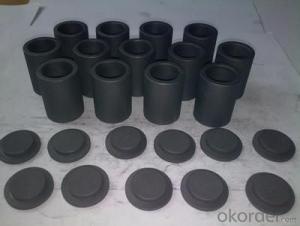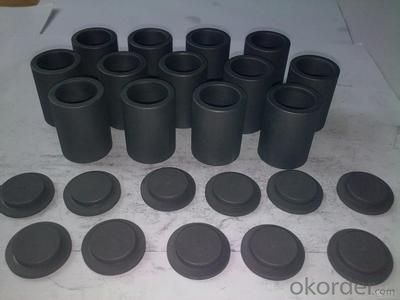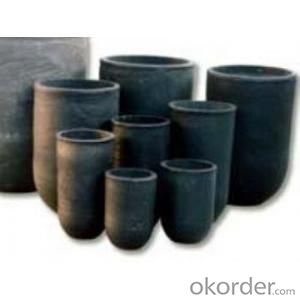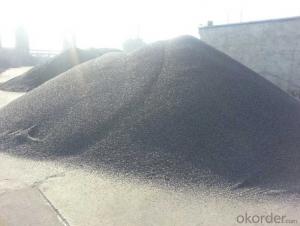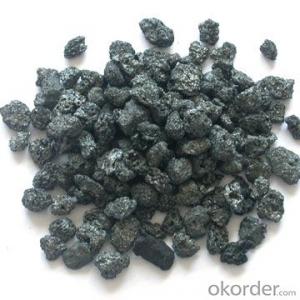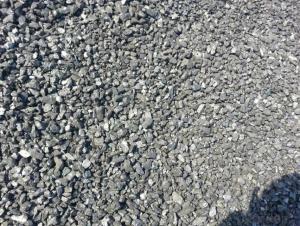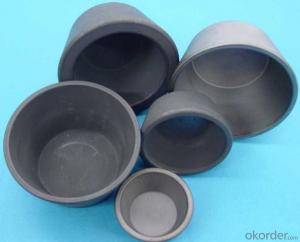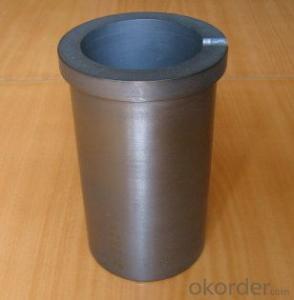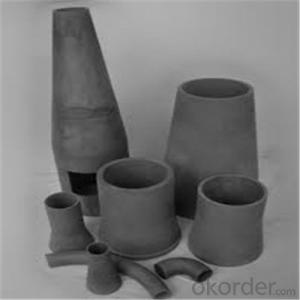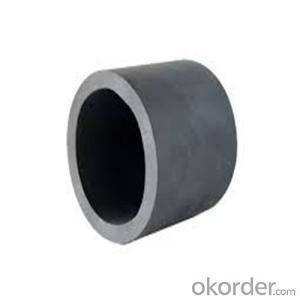Graphite Crucibles/High Heat Conduction CNBM
- Loading Port:
- Tianjin
- Payment Terms:
- TT OR LC
- Min Order Qty:
- 0 m.t.
- Supply Capability:
- 100000 m.t./month
OKorder Service Pledge
OKorder Financial Service
You Might Also Like
Product Description
A crucible is a container used to hold metal for melting in a furnace and it is needed to withstand the extreme temperatures encountered in melting metals. The crucible material must have a much higher melting point than that of the metal being melted and it must have good strength even when white hot.
Graphite crucible can withstand the high temperature, and has good resistance to chemical erosions and thermal shock. Especially graphite crucible is ideal for the melting of aluminum, copper and etc.
Packaging & Delivery
| Packaging Details: | in plywood cases with foam inside for protection |
| Delivery Detail: | in 15~20 days since order confirmed |
Features
1. SIC graphite crucible
2. high pure and density
3. high strength crucible
4. ISO 9001
5. high heat condduction
Specification
Bulk Density | g/cc | 1.70-1.88 |
Specific Resistance | μΩ.m | 6.0-15.0 |
Compressive Strength | MPa | 30-80 |
Bending Strength | MPa | 20-45 |
Shore hardness | 30-70 | |
C.T.E.(100-600°C) | x10-6 /°C | 2.5-5.5 |
Ash | % | 0.01-0.2 |
Maximum Grain Size | mm | 0.044-0 |
Pciture
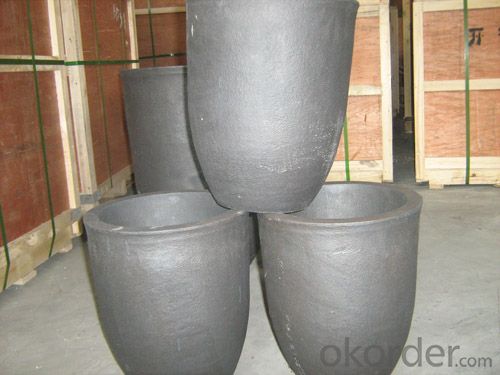
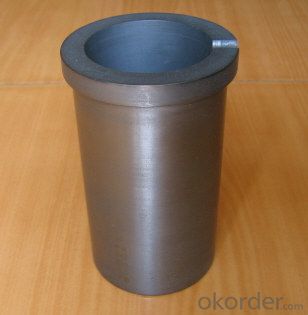
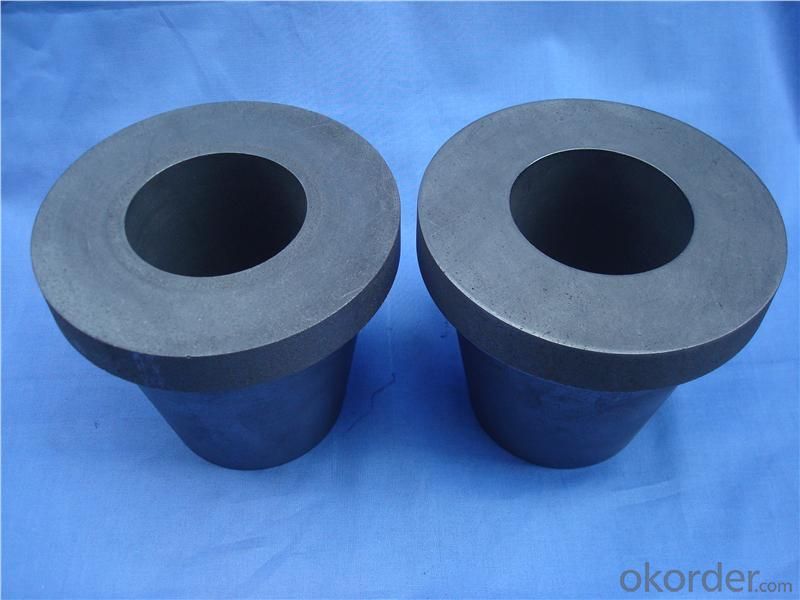
- Q: When will amines be fertilized?
- Avoid high temperature applications. The temperature is below 20 DEG C when ammonium bicarbonate is relatively stable, high temperature or moisture in the product exceeds a certain standard, is easy to be decomposed into ammonia and carbon dioxide emissions in the air, causing loss of nitrogen fertilizer. According to the test results show that the winter crops better than urea and ammonium carbonate. Because the temperature is low in winter, the process of urea conversion is long, but the ammonium carbonate can be directly absorbed without conversion. It is beneficial to the early growth and fast growth of winter crops. In addition, when applied to the soil ammonium bicarbonate, ammonium ion dissociation can be directly by soil colloid adsorption, and urea to winter crop soil, urea was dissolved in the soil solution in the molecular state, but not by soil colloid adsorption, it is more likely to cause the loss of nutrientsThe use of ammonium bicarbonate does not mix with alkaline fertilizers, which can lead to loss of nitrogen nutrients, resulting in low fertilizer efficiency. Using ammonium hydrogen carbonate friends should know that not with urea and ammonium hydrogen carbonate mixed fertilizer, ammonium bicarbonate if mixed with urea, urea conversion rate will not only extend, and will accelerate the volatilization of urea.Ammonium bicarbonate extremely volatile, so to avoid the ground using ammonium bicarbonate, ammonium bicarbonate has strong corrosion on leaf blade, easy to burn, can not be used as a foliar spray. There is one thing to note is that if the soil drought, even deep application coverage, can not be dissolved in ammonium bicarbonate, better soil moisture using ammonium bicarbonate, can reduce the volatilization loss, improve efficiency
- Q: How do fossil fuels release carbon into the atmosphere?
- Fossil fuels release carbon into the atmosphere through the process of combustion. When fossil fuels like coal, oil, and natural gas are burned for energy production, carbon dioxide (CO2) is released as a byproduct. This CO2 is a greenhouse gas that traps heat in the Earth's atmosphere, contributing to global warming and climate change.
- Q: How is carbon used in the production of paints and pigments?
- Carbon is used in the production of paints and pigments primarily as a black pigment. Carbon black, which is derived from the incomplete combustion of hydrocarbons, is mixed with binders to create black paints and pigments. It provides excellent opacity, color retention, and UV resistance, making it a popular choice in various applications, including automotive coatings, printing inks, and architectural paints.
- Q: Why use carbon batteries for alarm clocks?
- Look at your clock is what kind of, some nickel battery (batteries) can also be a bit expensive. Lithium battery. And what in fact almost never mind, as long as you start voltage alarm on the line.
- Q: Emerald garden high carbon tempered metal
- 2.1 businessmen in the lower right corner. After 2.2, on an island below. Go and eat the merchant and bring him home. Kill the dragon. Be sure to hurry. The merchant fell off (I don't recommend it). You can also put a red dragon below killed off 2 Dragon eggs. Called red dragon, the businessman to eat, then at home, do not ignore it, he died, a businessman has come out. Get around the enemy base!
- Q: But their chemical symbols are different, so they are different elements, different substances, but they feel the same thing... Tangled up ~!
- No one is the same. Lead is poisonous, and pencil lead is lead. The structure of carbon is the same as that of diamonds. Generally speaking, they are of structure, density and composition. No one is the same
- Q: How is carbon used in the steel industry?
- The steel industry heavily relies on carbon as it plays a crucial role in the production and enhancement of steel. Carbon is added to iron in the fundamental process that transforms it into steel, resulting in the desired properties of hardness, strength, and durability. In steelmaking, carbon is primarily used as an alloying element to improve the mechanical properties of steel. The carbon content in steel can vary depending on the desired grade and application, ranging from 0.1% to 2%. Low carbon steel, with a carbon content below 0.3%, is commonly used for applications that require good formability and weldability. On the other hand, high carbon steel, with a carbon content above 0.6%, is used for applications that demand high strength and hardness. Carbon also plays a crucial role in the heat treatment process of steel. Through carburizing, steel undergoes a heating process with carbon-rich gases or solids to increase the carbon content at the surface. This results in a hardened surface layer with improved wear resistance, while maintaining a tough and ductile core. Additionally, carbon is essential in the use of electric arc furnaces (EAFs) in steelmaking. EAFs utilize electricity to melt scrap steel and other raw materials. Carbon is introduced during this process to reduce the oxides present in the raw materials, allowing for efficient steel production. In conclusion, carbon is widely utilized in the steel industry to achieve the desired properties of steel, enhance its mechanical properties through heat treatment, and enable efficient steel production. This versatile element enables steel to be used in a wide range of applications across various industries.
- Q: How does carbon affect the properties of steel?
- Carbon is a crucial element in the production of steel and plays a significant role in determining its properties. The amount of carbon present in steel has a direct impact on its hardness, strength, and overall performance. By adding carbon to iron, the base metal of steel, it becomes significantly stronger and more durable. This is because the carbon atoms are able to occupy the spaces between iron atoms, preventing the metal from sliding or deforming easily. The higher the carbon content, the harder and stronger the steel becomes. Moreover, carbon also influences the steel's ability to be heat treated and its response to various manufacturing processes. When steel is heated and rapidly cooled, a process known as quenching, the presence of carbon allows for the formation of harder and more brittle structures, such as martensite. On the other hand, lower carbon content allows for the formation of softer and more ductile structures. In addition to its impact on strength and hardness, carbon also affects the steel's corrosion resistance. Higher carbon content can lead to reduced corrosion resistance, making the steel more susceptible to rust and other forms of degradation. This is why stainless steel, which contains a higher amount of chromium and low carbon content, is often chosen for applications where corrosion resistance is crucial. To summarize, carbon greatly influences the properties of steel. It enhances its strength and hardness, allows for heat treatment and response to manufacturing processes, and affects its corrosion resistance. The careful control of carbon content in steel is vital in order to achieve the desired properties for specific applications.
- Q: How is carbon used in the production of carbon fiber?
- Carbon plays a vital role in the production of carbon fiber. Carbon fiber production involves subjecting a precursor material, typically a polymer like polyacrylonitrile (PAN) or rayon, to a series of heating and chemical treatments. Initially, the precursor material undergoes carbonization, a process where it is heated to a high temperature without oxygen. This carbonization stage includes pyrolysis, which breaks down the molecular structure and eliminates non-carbon elements such as hydrogen, oxygen, and nitrogen. Once carbonization is complete, the resulting material becomes a carbon-rich structure referred to as char. However, it is not yet considered carbon fiber. To convert the char into carbon fibers, further processing steps called stabilization and graphitization are necessary. During stabilization, the char is exposed to heat in the presence of oxygen, resulting in the formation of cross-linked structures. This step enhances the fiber's thermal stability and prevents shrinkage or deformation during subsequent processing. Following stabilization, the material is heated at a higher temperature in an inert atmosphere during graphitization. This process aligns the carbon atoms within the fiber, creating a highly ordered and crystalline structure. Throughout this entire process, carbon serves as the primary constituent of the resulting carbon fiber. Starting from the precursor material containing carbon atoms, the carbonization and graphitization steps remove impurities and rearrange the carbon atoms, producing a durable and lightweight fiber. The resulting carbon fiber possesses exceptional properties, including high strength-to-weight ratio, stiffness, and resistance to heat and chemicals. These attributes make it a valuable material in numerous industries, such as aerospace, automotive, and sporting goods.
- Q: What is the structure of graphite, another form of carbon?
- Graphite is a unique form of carbon that exhibits a distinct structure, different from other forms such as diamond or amorphous carbon. Its structure consists of layers of carbon atoms arranged in a hexagonal lattice. Each carbon atom forms covalent bonds with three neighboring carbon atoms, resulting in a two-dimensional sheet-like structure. Within each layer, the carbon atoms are bonded together through strong covalent bonds, forming a planar network. The carbon-carbon bonds in graphite are significantly stronger than typical single bonds, making the structure highly stable. The hexagonal lattice arrangement of carbon atoms creates a honeycomb-like pattern, giving graphite its characteristic appearance. The layers in graphite are held together by weak van der Waals forces, allowing them to slide past each other with ease. This property gives graphite its lubricating nature, as well as its ability to leave a mark on paper when used as a pencil lead. The arrangement of carbon atoms in graphite also leads to its excellent electrical conductivity. The delocalized electrons in the structure can move freely along the layers, allowing for the flow of electric current. This property makes graphite useful in various applications, including electrical components, electrodes, and as a lubricant in high-temperature environments. In summary, the structure of graphite consists of layers of carbon atoms arranged in a hexagonal lattice, bonded together by strong covalent bonds within each layer and held together by weak van der Waals forces between the layers. This unique structure gives graphite its distinct properties, such as its lubricating nature, electrical conductivity, and versatility in various industrial applications.
Send your message to us
Graphite Crucibles/High Heat Conduction CNBM
- Loading Port:
- Tianjin
- Payment Terms:
- TT OR LC
- Min Order Qty:
- 0 m.t.
- Supply Capability:
- 100000 m.t./month
OKorder Service Pledge
OKorder Financial Service
Similar products
Hot products
Hot Searches
